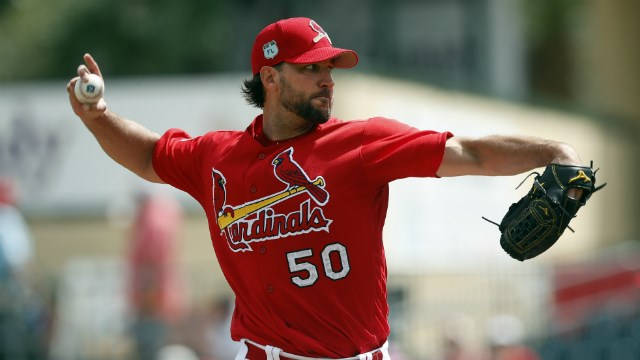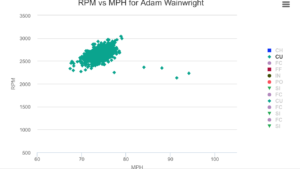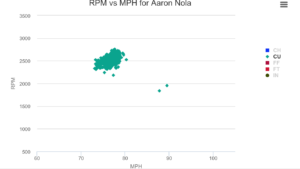Adam Wainwright Needs His New (Old) Curveball

The St. Louis Cardinals’ Ace Adam Wainwright returned from a brutal Achilles injury in earnest in 2016. With four top 3 Cy Young finishes since 2010, Waino is one of the most talented (and underrated) pitchers in the modern era. His success can largely be traced back to his nasty curveball, and even his Twitter handle (@UncleCharlie50) pays homage to his dominant offering. Wainwright’s 2016 performance did not exactly ring success with the same dominant Uncle Charlie that has earmarked his career.
Wainwright’s 2016 season was somewhere between pedestrian and ugly. He was healthy, starting 33 games, but ran just a 4.62 ERA and led the league in both hits and earned runs allowed. He struck guys out less frequently than his career average and also posted a career worst WHIP. But Waino thinks he figured something out, and it all goes back to his curveball.
MLB.com ran a story that, while watching an MLB Network special featuring himself, Wainwright discovered that he had inadvertently shifted his curveball grip while coming back from that Achilles injury. Following a few tosses with his wife, his optimism heading into 2017 was renewed.
Friend of the blog and mlb.com beat writer David Adler (_@dadler on Twitter and worth the follow) did some digging and found that Wainwright’s 2016 curveball was likely to blame for some of those 2016 struggles:
 [KGVID]https://www.offthebenchbaseball.com/wp-content/uploads/2017/03/ezgif.com-video-to-gif.mp4[/KGVID]
[KGVID]https://www.offthebenchbaseball.com/wp-content/uploads/2017/03/ezgif.com-video-to-gif.mp4[/KGVID]
All of that is to say that Wainwright’s curveball was both worse statistically and different in 2016. That second GIF shows the subtle change in Wainwright’s curve from the pitch that dropped 9.5 inches to the pitch that moves 8.8 inches. Bats are roughly 0.6inches in diameter. That difference is what misses bats. More simply: It just was no longer the elite offering that it once was and neither was Wainwright.
It’s 2017 and we now have Statcast, so I feel compelled to offer one more look at this with respect to spin rate. Unfortunately, Statcast does not have RPM data back to 2013, when Wainwright was at the top of his game. Still, we can compare Wainwright’s 2016 curveball to another good curveball. Below we see Wainwright’s curveballs compared with Aaron Nola’s curveballs. Nola is known to having one of the best hooks in the game.
I expected Nola to show higher RPMs than Wainwright since A) his hook was better in 2016 and B) he is younger and throws harder. Not so fast. The big takeaway from those two graphs is the clustering of Nola’s pitches when compared with the large, spread-out blob that was Wainwright’s.
Wainwright’s chart reads like a pitcher searching for answers, but also could contribute to the lack of “crispness” on his offering. He never knew exactly how it would release from his hand, and therefore never knew exactly how to locate the pitch.
Adam Wainwright’s pitching identity is tied to his curveball. He once had an elite, borderline Hall of Fame curveball, but in 2016 it was merely average. He got a little homer-prone as a result and never found the grove that made him one of baseball’s top pitchers from 2010-2014. He seems to think that the new (old) grip will help his extension, spin rate, crispness, and results. It better, because a 35 year old with a 4.6 ERA earning $20 Million a year through 2018 will not sit too well with Cardinals faithful.
-Sean Morash















